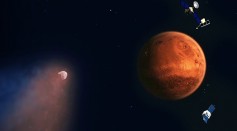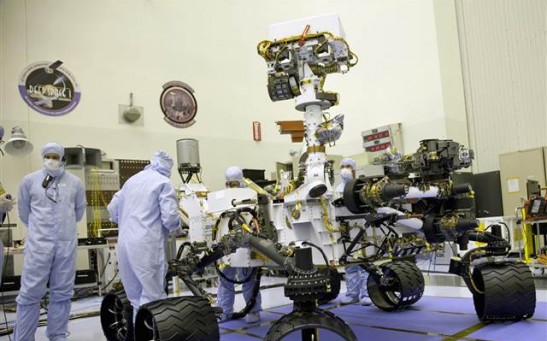Mars

Curiosity Rover Gets Its Own Special—Discovery Channel Tonight

Organics on Mars—Could Life Be Sustained on Red Planet?

Could Water Have Changed the Face of Mars, or Is the Habitability Question too Much to Bare?

NASA Finds Mars Craters May Have Once Been Seasonal Lakes

Next Stop for Curiosity Rover? Lava Mound May Hold Answers to Ancient Martian Lava Flows

Comet Siding Spring Captured by ISRO’s Mars Orbiter

Siding Springs Comet Came in Close For a Martian Meteor Shower

Siding Springs Comet Came in Close For a Martian Meteor Shower

Forget Ebola, Journey to Mars May Be More Lethal Death Sentence

Forget Ebola, Journey to Mars May Be More Lethal Death Sentence

Not Just NASA ‘Ducks & Covers’—Comet Siding Spring

Watch: NASA Moves Martian Orbiters to Avoid Comet Siding Spring

NASA’s Spacecrafts ‘Duck And Cover’ Behind Mars as Comet Passes Through

NASA Plans Life and Death on Mars—Planet’s First ‘Mars Plant Experiment’ to be Launched in 2020
Most Popular

How Technology Is Changing the Real Estate Industry?

AI Revolution in Medical Education: Transforming How Healthcare Professionals Learn

Zombie Star Set to Light Up Night Sky: Blaze Star Could Erupt Soon

Nikolay Karpenko Biography, Photo, Career, Accomplishments






